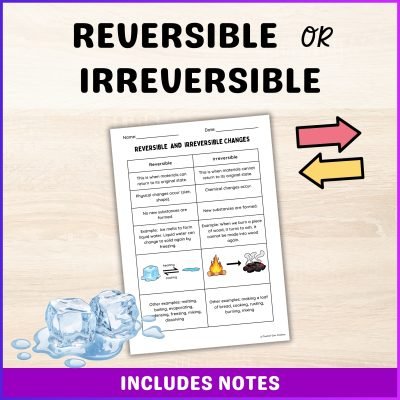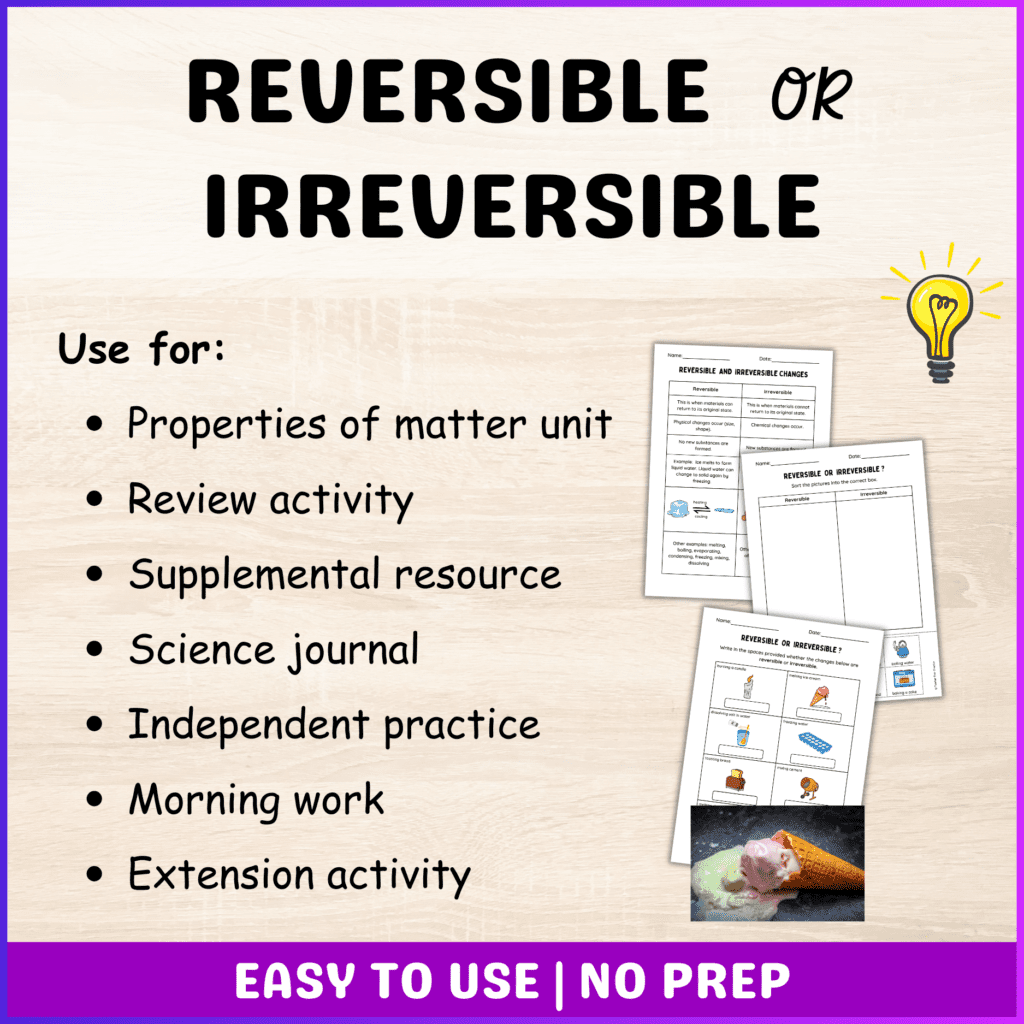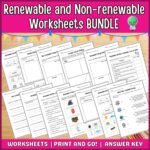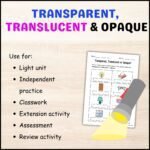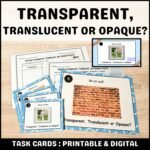Engaging Ways to Teach Reversible and Irreversible Changes in Elementary Science
Teaching reversible and irreversible changes is a fantastic way to connect science to your students’ everyday experiences. This topic, perfect for grades 2-5, helps students see how some changes—like melting ice—can be reversed, while others—like burning paper—are permanent. Encourage your students to observe, ask questions, and consider why some changes are reversible while others are not. If you’re searching for creative ways to bring this lesson to life, I’ve gathered practical tips and activities in this blog. With these ideas and a helpful resource, you’ll make this concept both memorable and enjoyable for your students.
The Benefits of Using Reversible and Irreversible Changes Worksheets
Check out the Reversible and Irreversible Changes Worksheets Notes resource enhances this lesson in multiple ways:
•Ready-to-Use Format: With a “no prep” design, these worksheets are perfect for teachers looking for easy-to-use classroom resources.
•Hands-On Sorting for Practical Application: The sorting cut-and-paste activity makes learning active and reinforces student understanding by classifying changes themselves.
•Notes and Diagrams for Easy Reference: With a built-in notes section, students have a summary they can refer to during the lesson, helping to reinforce key concepts.
Why Reversible and Irreversible Changes Matter
Knowing how to classify changes helps students develop observation and reasoning skills. This understanding of whether changes are reversible or irreversible lays the groundwork for later topics in physical science and chemistry. For example, observing how water freezes and melts back to liquid introduces reversible changes, while burning or cooking demonstrates permanent, irreversible changes. Notably, understanding these distinctions empowers students to make predictions and explore new ideas in science.
Effective Teaching Tips for Reversible and Irreversible Changes
1. Begin with Relatable, Real-Life Examples
Start by asking students about changes they observe at home or in everyday situations. Do they notice what happens when ice cubes melt? What about changes when their favorite foods are cooked? Examples like these make science relatable. Students can connect what they see in life to what they learn in class.
2.Use Simple, Hands-On Demonstrations
Demonstrations can be simple yet effective:
•Melting and Freezing: Show students how water can change to ice and back again, reinforcing the concept of reversible changes.
•Cooking or Toasting: Bring in a small toaster or show an example to illustrate how toasting bread is an irreversible change.
•Dissolving Salt or Sugar in Water: Explain that dissolving salt in water can be reversed through evaporation, while discussing how other processes, like burning, are permanent.
Additionally, use these demonstrations to encourage student observation and discussion.
3.Incorporate Sorting Activities to Reinforce Learning
Sorting activities provide an interactive way for students to solidify their understanding. The Reversible and Irreversible Changes Worksheets with Notes activity, available on TPT, offers students a chance to classify different types of changes by cutting and pasting. This hands-on approach not only engages but also allows them to apply the knowledge actively.
Visualize the Concept with Diagrams and Notes
Anchor charts and diagrams support learning by helping students visualize examples of each type of change. The included notes section allows students to track examples, creating a useful reference tool. Encourage students to draw or describe reversible and irreversible changes. This adds another layer of understanding through visual representation.
Challenge with “What-If” Scenarios
Pose “what-if” questions to promote critical thinking, such as, “What if you freeze water and let it melt? Is that reversible?” or “What happens when you bake clay?” These questions allow students to explore more deeply, applying their knowledge to different situations. Then, encourage group discussions for students to justify their answers, fostering collaboration and reasoning skills.
Effective Resources are Important
To extend learning, encourage students to observe reversible and irreversible changes outside of class. Ask them to identify examples at home, like freezing juice or baking, and consider if these are reversible. This approach reinforces the lesson and builds curiosity beyond the classroom. Teaching reversible and irreversible changes can be rewarding and engaging, especially with real-life examples and hands-on activities. Using the Reversible and Irreversible Changes Worksheets with Notes offers a structured, interactive way to teach this concept. This empowers students to think critically about transformations happening all around them.


